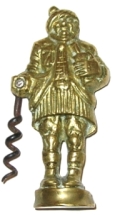 |
 The Virtual Corkscrew Museum's Weekly Newspaper |
 |
 |
 The Virtual Corkscrew Museum's Weekly Newspaper |
 |
|
Sunday, February 10, 2008 |
Number 503 |
Horticulture 2 Issue
Harry Lauder
After reading about Harry Lauder's Walking Stick in last week's issue, reader Frank Ellis wrote "Your snippet about Harry Lauder in The Weekly Screw number 502 made me realize that I had not made the connection between him and British Registration number 852412 which features in our book Corkscrews: British Registered Designs. Thanks for the idea..
"George Leslie Tirebuck, a British subject. residing at , 33, Hallam Grange Crescent, Fulwood, Sheffield 10 was assigned British Registration Number 852,412 on October 8, 1947. The copyright expired 8 October 1952 This was Tirebuck's second registered design, and although he did not extend the copyright cover on this Scotsman, it is probably his most common corkscrew design. The Scotsman wears a kilt, clutches a bottle of whisky and the worm is his stick.
Editor's note: Corkscrews: British Registered Designs by Frank Ellis and Barbara Ellis was published in 2007. See the August 13, 2007 issue for more information.
ICCA Walking Stick
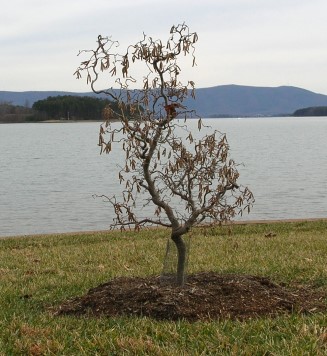
In 2003 the Bulls invited the International Correspondence of Corkscrew Addicts to their home for a Southern Barbecue and corkscrew viewing. Several weeks later a landscaper showed up with a Corkscrew Hazel (Harry Lauder's Walking Stick) and planted it in the Bull's yard - a much appreciated gift from the attending members of the ICCA.
A Boring Tool
Reader Carroll Johnson writes "Attached is a photo of a T corkscrew made from fairly hard resin plastic that was sold to be used to bore holes in the compost pile allowing air to penetrate to the bottom of the pile. It is 30 inches long and has stamped on the shank: Made in Canada Sceptor 975005008. The idea being that it was less work to use the corkscrew than it would be to turn the pile."
Boring Tool Patent
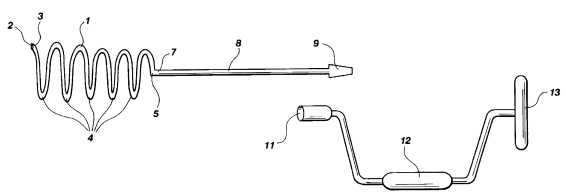
On June 16, 1996 Paul A. Farber of Roy, Utah was granted U. S. Patent No. 5,765,437 for his "Compost Aerator and Monitor". Farber's boring tool offers three options for use. It can be used in brace and bit fashion. The top handle (13) can be removed and placed on the bottom shaft (9) for simple turning. Or the corkscrew-like tool can be driven by a power drill as shown below.
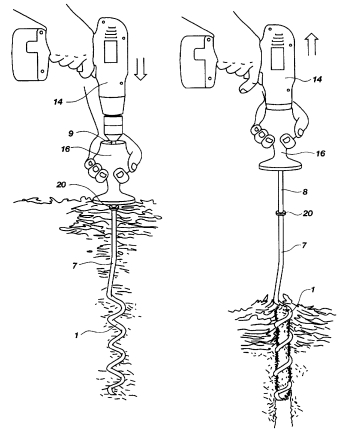
Corkscrew Orchid
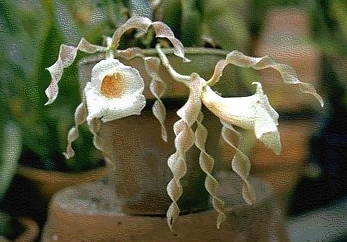
Submitted by Bert Giulian
The Corkscrew Orchid (Trichopilia tortilis) has twisting sepals and petals. The plant is confined to greenhouses and home environments for the average helixophile. However, should the corkscrew addict want to see the plant growing in nature, suggested locations are Belize and New Guinea.
Corkscrew Vase
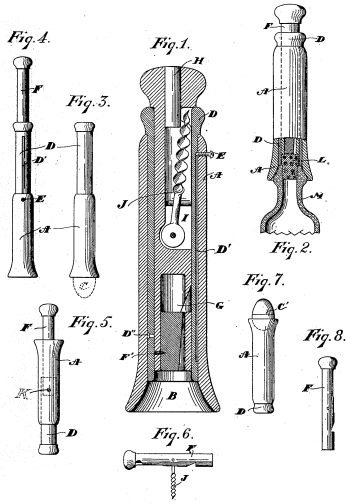
The prize for the ultimate combination tool incorporating a corkscrew may very well go to Elijah Moat. The Los Angeles inventor secured U. S. Patent Number 860,226 on July 16, 1907.
Figure 6 shows the implement used as a corkscrew. But what are the other options? Reading through Moat's claims, we find:
Figure 1 and 2: A bottle corker
Figure 3: An egg tester, ear trumpet, monocular, or megaphone
Figure 4: Tuning instrument or whistle dinner call
Figure 5: A whistle or telescopic siren
Figure 7: Ball juggler cup or egg cup
Figure 8: A police whistle (with a worm folded into it)So where's the vase for our garden flowers? Moat claims it can be used as a "flower vase" in the Figure 7 configuration!
Growing Corkscrews
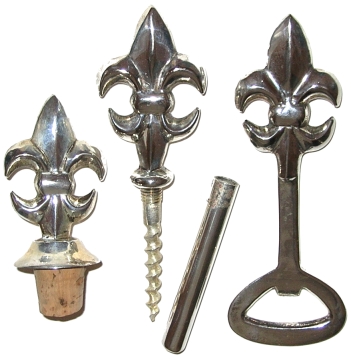
Fleur-de-lis silver-plated bar set

Florida Oranges
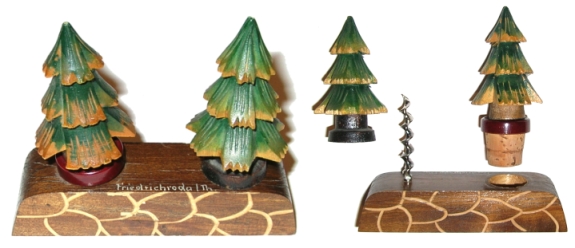
German Pines
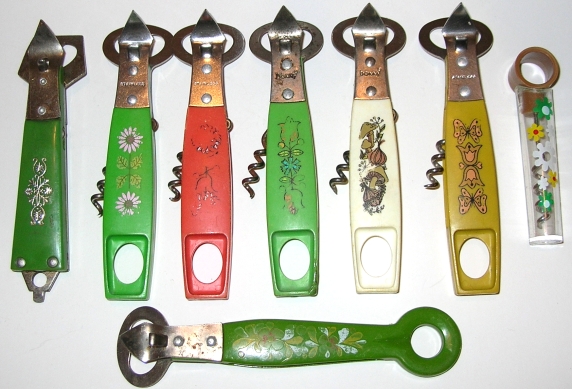
Gardening in plastics
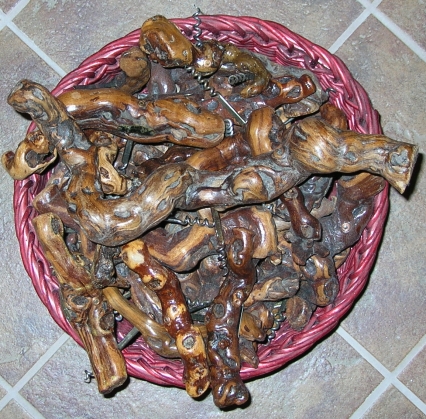
Baskets Full of Corkscrews
Related Stories
April 25, 2003: National Arbor Day (Corkscrew Willow)
November 28, 2003: Corkscrew Tree, Saucier, Mississippi
January 14, 2007: Corkscrew Palm in Zanzibar
January 28, 2007 : Trees
July 8, 2007: Carroll's Wife's Garden
February 3, 2008: Horticulture
|
©2008 Don Bull, Editor |